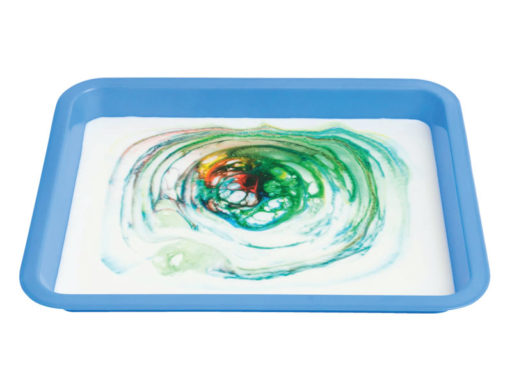Most substances behave in unsurprising ways that depend on whether they are solids, liquids or gases. This activity shows how to create a substance called oobleck, which can behave like both a solid and a liquid, depending on how hard you hit it.
Printable downloads
Follow these steps…
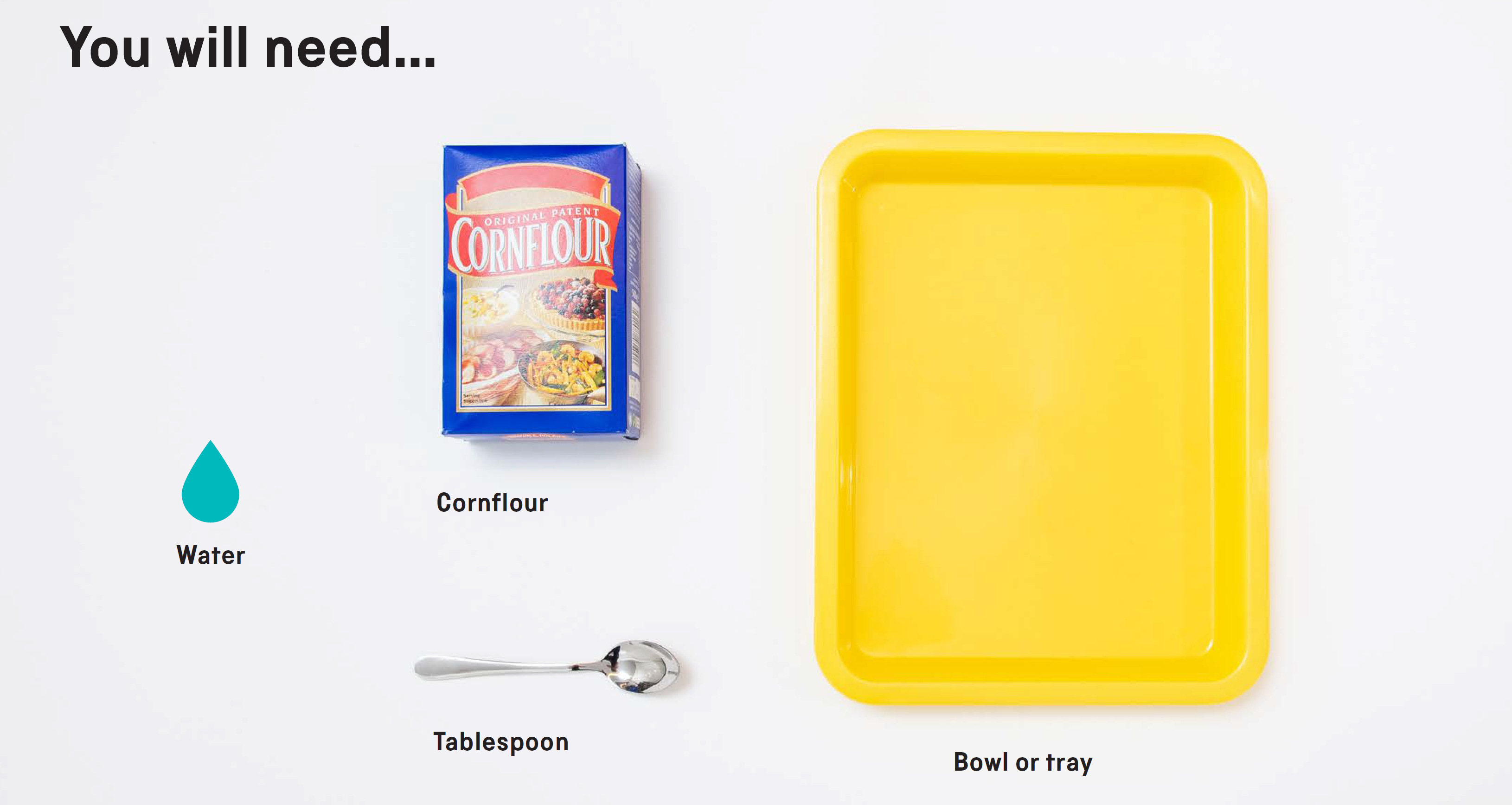
Top tip
Oobleck can make a great deal of mess, although once it has dried it can easily be swept or vacuumed up. You may want to wear an apron. If cornflour does get onto your clothes, it will wash out with no problems.
-
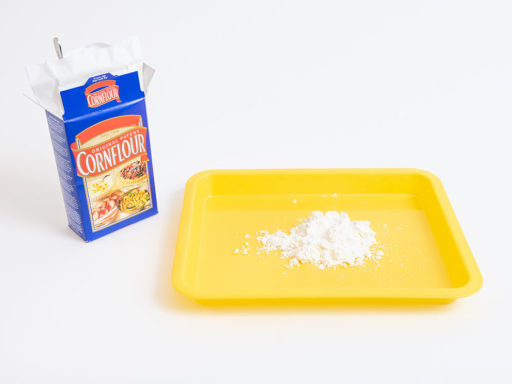 Put a heaped amount of cornflour in a bowl or tray.
Put a heaped amount of cornflour in a bowl or tray. -
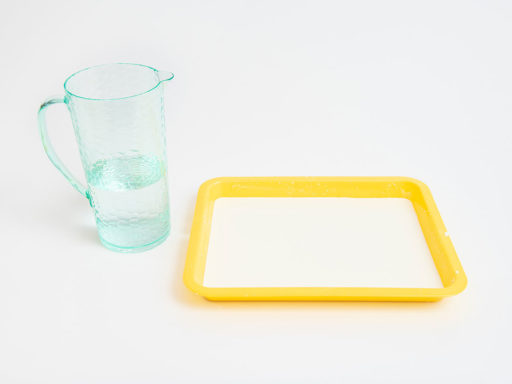 Slowly add the water a bit at a time until the cornflour resembles a very thick, viscous liquid.
Slowly add the water a bit at a time until the cornflour resembles a very thick, viscous liquid. -
 Now you can play with the oobleck – try stirring it in the bowl with a spoon.
Now you can play with the oobleck – try stirring it in the bowl with a spoon. -
 Roll the oobleck into a ball in your hand and see what happens when you stop.
Roll the oobleck into a ball in your hand and see what happens when you stop.
Think and talk about…
- What do you think is happening?
- Does oobleck behave like a solid, liquid or both?
- Why do you think oobleck acts like this?
- Can you think of anything else that behaves like oobleck?
- If you had a pool full of oobleck, do you think you could run across it?
Investigate…
- What happens if you let your fingers gently run through the oobleck?
- Apply a force to the oobleck, such as tapping or slapping it. What effect does it have?
- If you let your hand sink into the oobleck, can you pull it out quickly?
- How hard is it to remove objects from the bottom of the bowl?
Did you know?
The name ‘oobleck’ comes from a Dr Seuss book called Bartholomew and the Oobleck.
What’s the science?
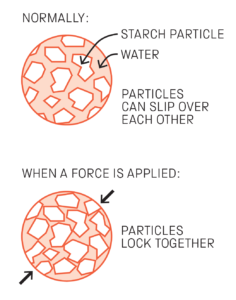 The cornflour doesn’t dissolve in the water – it creates a suspension called oobleck, which is a non-Newtonian fluid. Non-Newtonian fluids behave like both a solid and a liquid.
The cornflour doesn’t dissolve in the water – it creates a suspension called oobleck, which is a non-Newtonian fluid. Non-Newtonian fluids behave like both a solid and a liquid.
Cornflour consists of billions of tiny irregularly shaped particles of starch. When water is added, the liquid flows around each starch grain and acts like a lubricant, making the mixture runny as the particles slip over each other. When a sudden large force is applied, the starch particles tangle, and the mixture hardens. However, these effects are only temporary. As soon as the force is removed, the water surrounds each of the particles again and the mixture becomes runny once more.
Science in your world
 The properties of non-Newtonian fluids are used in special protective body armour for athletes such as extreme cyclists and for the military. The armour is flexible to allow a range of normal movements, but as soon as something hits it, the armour hardens up to protect the wearer.
The properties of non-Newtonian fluids are used in special protective body armour for athletes such as extreme cyclists and for the military. The armour is flexible to allow a range of normal movements, but as soon as something hits it, the armour hardens up to protect the wearer.

